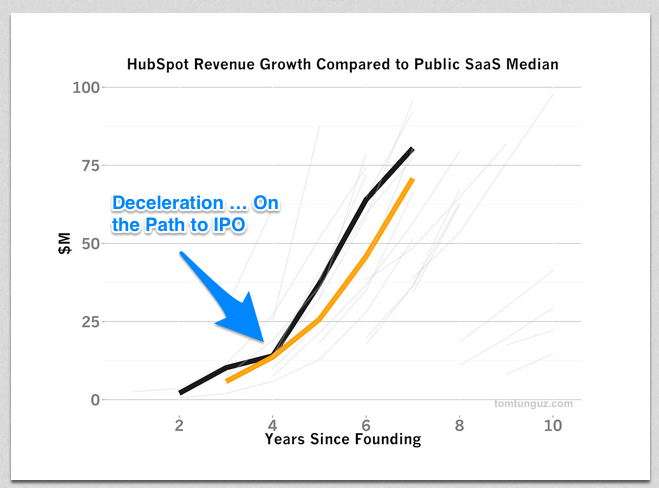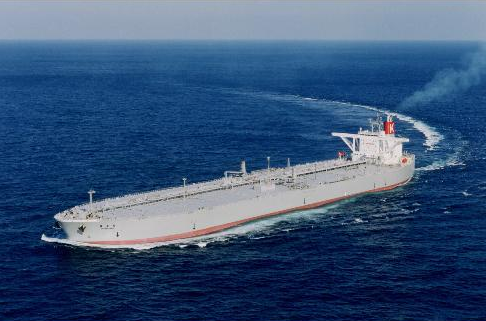If your business is doing reasonably well, then a downturn is your time to:
1/ quietly plan
2/ cut out the noise
3/ hire that missing VP
4/ go long
5/ stop worrying about making everyone happy
6/ beat the competition
7/ focus on quality, in growth + teamDon't squander it
— Jason ✨Be Kind✨ Lemkin (@jasonlk) June 26, 2023
A top SaaS VC to me the other day: “Once a SaaS business decelerates, it becomes almost hopeless. No one will buy you, fund you, or join you.”

This VC certainly had a point. The good thing about SaaS is the revenue recurs. The bad news is it always has to be recurring by a materially higher absolute amount each quarter, each year. You can’t go from $4m ARR one year to just $5m ARR next and really get anywhere. You can’t go from $15m ARR one year and then only $20m ARR the next and beat the competition. If this is the best you can do … then you’re on a slow and painful march to irrelevance and atrophy. It also probably shows you’ve sort of fallen out of product-market fit. Cloud is so big today, that if you are past $1m-$2m ARR and have happy customers, you should be growing at a decent clip. If you have product-market fit.
But …
The real truth, deceleration, it happens to all of us. At least at some small scale. At least for a few quarters. I wrote a piece some time ago here, a personal favorite, about Our Year of Hell. When a bad hire at a key time, and some confusion on strategy, led us to our worst year ever on a Year-over-Year growth rate basis. More on that here.
So what do you do, if you decelerate? For me back in the day, the answer was a “simple” matter of bringing in a great VP of Sales. It cured our problems in 60 days. More on that here. But why did it solve our problems? Because as rough as that year was, as terrible as it was (and I seriously thought about bringing in someone else to carry the burden) … it turned out we still had the leads. People were still coming by to the Open House. They just weren’t buying at the prior rate.
And so what I learned, and what I’ve helped other founders with since, is that at least 8 times out of 10, if you decelerate post Initial Traction … if you act quickly enough … you can Reignite Growth. It’s true.
Let’s analyze the problems that cause deceleration and what you can do about them.
—
Problem #1: “I’ve tapped out my market.” Answer: Of course you have. Everyone has and does. You think Salesforce, now routinely closing nine-figure deals across 5+ Cloud product lines, is really selling to the same SFA-for-SMBs market it started with? Of course not. NetSuite also grew upmarket in a similar way. At Adobe Sign / EchoSign, we started with a freemium model but went upmarket. Today, the entire freemium market for e-signatures is probably still < $20m ARR — out of a $4B market. Not enough for the players to make on freemium alone. Box turned into the enterprise content management of choice for the CIO’s office. It sure didn’t start there. So everyone has to redefine their markets. How do you do this?
- My #1 tip to redefining your market is — Look To Your Outliers. Because your outliers aren’t really outliers. They’re The Future. Let’s say you have 200 customers. And 190 are in say tech. But 5 are in e-commerce, and 5 are in insurance. I know those 5 in each vertical today aren’t enough to get you to $100m ARR. But if you somehow managed to get unexpected customers in the early days, double down there. They are showing you the path to brand new markets.
- My #2 tip to redefining your market is look to what your Top 2-10 customers want and want more of. And do more of that. I know you sort of know this already. But the Top 2 customers also show you the future. Have just one happy customer that pays you $100k ACV? You can get another, and then 10 more. And you can probably double your prices.
—
Problem #2: “The Competition is Killing Us.” Of course it is. At least sometimes. That’s competition. Most SaaS markets aren’t natural monopolies. They’re natural oligopolies. (More on why here). And in oligopolies — we see brutal competition, on just about everything, except sometimes pricing.
What do you do? My top tips if the competition really is killing you, more than last year:
- First, Batten down the Hatches. Triple Down on Your Customers and Customer Success. I know you may be tempted to spend all your time on sales when sales slow. But that’s wrong, as odd as it sounds. Your best allies, your best champions, are your existing customers — if they are happy. Even if your product is far worse than the competition, if you deliver for them intensely, odds are they won’t churn. So get on a damn plane. Tomorrow. Visit all your top customers. All of them. You, the CEO. Show them the love. And ask them to spread the word. Do customer dinners. Get them all together (pay up). Do a customer conference if you haven’t yet. Second order revenue delivers even in tough times, if you show your customers love. It’s the one thing we know works, good times and bad. But you gotta press the flesh to make it happen.

- Second, be analytical about lost deals. Just make things better, step-by-step. As a calm, cold, process. As long as you have time, and leads, you can close almost any feature gap with a great team. Don’t panic, and don’t fret. Just build what you need to close the gaps, even if it takes 6 months. And tell the customers clearly what’s coming that’s better. Some won’t buy if the feature gaps aren’t closed yet. But others will believe in you. This won’t double your growth overnight. But it will increase your win rates, at least a bit. And when you’re decelerating, every little thing you can do to increase win rates is critical.
- See if you really have a team that really can compete — and relishes it. If not, make changes ASAP. Bill Binch, who took Marketo from nothing to nine figures in revenues, the other day wrote that the #1 thing he looks for in sales rep interviews is someone that can compete. Can your team? Competition can be fun if you’re used to it and good at it. If you’re not, it’s miserable. If your team isn’t good enough at competition, you may need to make serious changes here. You can hire seemingly great reps and managers out of companies where yes closing is hard, but competing isn’t. Selling Google Adwords just isn’t the biggest challenge in the world (but maximizing the Adwords budget, by contrast, surely is). These guys often don’t work so well in competitive SaaS spaces. You may need to get rid of all of them. All of them.
- Make sure you’re really properly positioning yourself in the market. What are you? The enterprise choice? The ease-of-use choice? The web choice? The mobile leader? Double down on what’s working, especially when things get tougher. Even if the competition is better than you in every single way in some sense — you still will have a relative advantage in some area. Otherwise, you’d have no customers. Focus on that. Even if it’s more a marketing game than a technology differentiation. Improving your messaging in marketing and sales may not triple sales. But again, it can improve your close rates.
—
Problem #3: “My Team Isn’t Good Enough and I Can’t Attract the Great Ones To Join Me.” Yes, this is a real problem. And boo-hoo you aren’t Dropbox-cool. Time to suck it up and spend at least 25% of your time scouring the earth for great hires. Look, there is someone out there that is better than your suboptimal VP of Sales / VP of Marketing / VP of Engineering / VP of Whatever — that actually does need a job. If you’re accelerating, take your time here on these hires. But if you’re decelerating — any upgrade will make a difference. So make one. Deceleration is the time when a Good Plan Today is Better than a Perfect Plan Tomorrow is especially true in hiring. If your VP of Engineering doesn’t want to build features for your big customers, or can’t hire … just find someone 50% better. That’s enough. And make the hire. On the spot. And given them whatever it takes, equity, cash, it doesn’t matter. You have to reignite growth. Make It So.
—
Deceleration happens to all of us. I could tell you the story of several CEOs of multi-billion dollar SaaS companies that lost faith and desperately tried to sell themselves at tough times. When things decelerated.
Look at the chart below from Tom Tunguz nicely charting Hubspot’s revenues pre-IPO. Today, they’re worth $7 billion. As you can see below, they had their own deceleration year. And then rebounded incredibly the next year. In fact, after their deceleration … they accelerated faster than the average SaaS company to IPO. Awesome.

It has happened to all of us. And you can’t turn around a tanker in 1/10th of a mile. You can’t change everything overnight. You can’t reignite growth in 30 days. You just can’t.
The key is to Act Now though. Now. Make the one great hire (like I did). Focus on your relative competitive advantages, and double down there. Find future growth through your outliers. Start today. Don’t screw around.
What won’t work is Inaction. There is no place for Ostrich behavior in SaaS. Get off Twitter. In fact, get off this blog. And do something right now, today, that can help at least a smidge. As horrible as it is, you can survive if you decelerate for just a few quarters. You can rebound, as long as the leads are there, as long as the prospects at least come by, even if they don’t buy. But, if you decelerate for 15-18 months straight … you’ll be dead in the water.
image from here
(note: an updated SaaStr Classic post)


